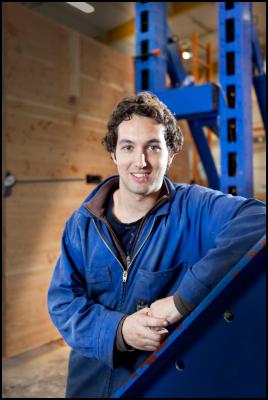UC Researching Seismic Design For Timber Buildings
Monday, 24 June 2013, 12:11 pm
Press Release: University of Canterbury
UC Researching Seismic Design For Multi-storey Timber Buildings
June 24, 2013
A University of Canterbury (UC) research team is investigating a new type of design for multi-storey timber buildings to successfully withstand earthquakes.
UC researcher Andrew Dunbar says they are testing a combination of a low damage structural system with cross laminated timber.
``This is the first time in the world that anyone has done this. Cross laminated timber (CLT) panels are a new product to New Zealand, which started up at a Nelson factory last year,’’ Dunbar says.
``The panels are made like plywood with boards laid out in alternating directions. The difference is that CLT uses whole timber planks rather than thin veneers. Panels can be made from cheap low grade material to produce a quality structural material.
``In New Zealand and overseas multi-storey timber structures are becoming increasingly desirable for architects and building owners due to their aesthetic and environmental benefits.
``There is increasing public pressure to have low damage structural systems with minimal business interruption after a moderate to severe seismic event.
``The aim of our research is to combine a low damage structural system with CLT. We are being supervised by Professor Andy Buchanan and Associate Professor Stefano Pampanin.
``We are also using post-tensioned high strength steel tendons that clamp the CLT walls to the foundation. During an earthquake, the walls are allowed to rock and the high strength steel tendons act like rubber bands and snap the building back to its original position.
Advertisement - scroll to continue reading
``This is the same concept that has been applied to the new Christchurch timber buildings in Victoria St, Birmingham Drive and the concrete Southern Cross Hospital Endoscopy building which was built before the earthquakes.’’
Dunbar says two test specimens are the feature of their research a low seismic option and a high seismic option. The low seismic option is aimed at the Auckland and Australian markets, replacing concrete tilt panels and shear cores.
The high seismic option is aimed for the Christchurch and Wellington areas providing a low damage system with replaceable energy dissipaters that act as ductile fuses.
The timber panels are much lighter than concrete providing smaller foundations meaning less expense.
``Our cross design system gives connections a much higher capacity than traditional timber using nails or bolts. This can be achieved at a comparable cost to concrete or steel while providing the added environmental and aesthetic benefits,’’ Dunbar says.
Final results of his research at UC’s Civil engineering and Natural Resources laboratory will be known at the end of the year. UC was recently ranked the 21st university in the world in terms of civil engineering and natural resources.

ENDS
Advertisement - scroll to continue reading
a.supporter:hover {background:#EC4438!important;} @media screen and (max-width: 480px) { #byline-block div.byline-block {padding-right:16px;}}
Using Scoop for work?
Scoop is free for personal use, but you’ll need a licence for work use. This is part of our Ethical Paywall and how we fund Scoop. Join today with plans starting from less than $3 per week, plus gain access to exclusive Pro features.
Join Pro Individual Find out more
Find more from University of Canterbury on InfoPages.